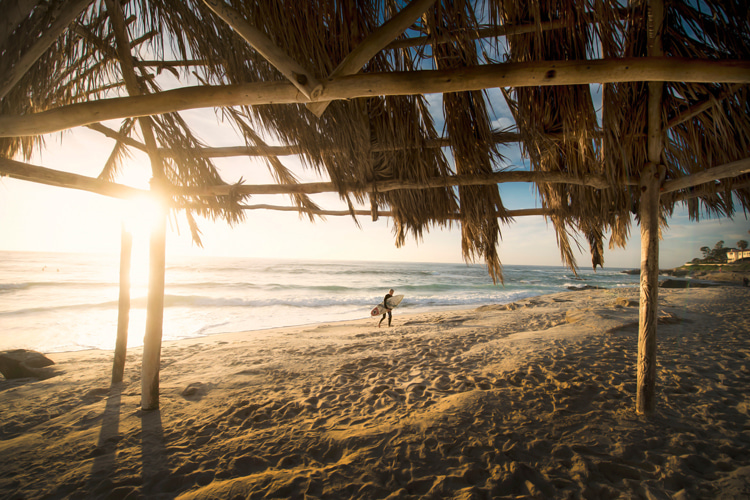In the mid-1940s, a group of California surfer friends built a surf shack at Windansea Beach that would become one of La Jolla's most iconic landmarks.
Originally called Neptune Beach, Windansea got its name from the old hotel across the way owned by the Snell family.
The place quickly became a popular surf spot in Southern California and the home of Golden State's original surf shack.
The surfers at Windansea were often at the forefront of design and innovation.
For example, they were the first to try the foam surfboards that began to arrive with improved technology after World War II.
As a result, varnished wood surfboards disappeared along with hollow paddleboards because they became obsolete.
The historic shed was an idea of half a dozen passionate wave riders, who were forever immortalized in a black and white picture.
Walter Roach took the famous photograph of his five good friends getting ready for a day's surf at Windansea in 1946.
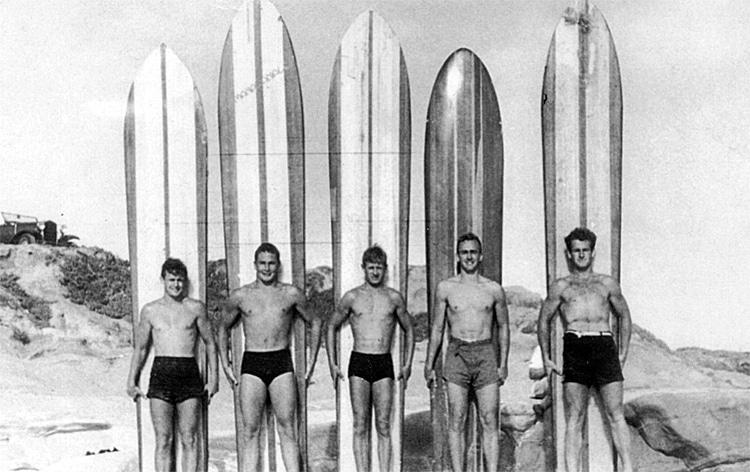
The pioneers were, from left to right, Towny Cromwell, Buddy Hull, Woody Ekstrom, Bill Isenhouer, and Andy Forshaw.
These surfers created the Windansea Surf Shack with a purpose.
"My father said they built the shack so that they could leave their surfboards there," explained Barney Roach, the son of Walter Roach.
"Nobody stole things back then, and they left their boards overnight, so they didn't have to carry them back and forth."
"My dad took a picture of his five buddies at the beach but was not in the picture... because he took the picture!" Barney Roach, Walter's son, told SurferToday.
"Sadly, my father passed away in 1997."
"He suffered a devastating stroke at the age of 71 while playing tennis at the La Jolla Recreation Center."
In 1998, the shack at Windansea Beach in La Jolla was added to the official register by the San Diego Historic Site Board (HSB) and declared a California Historical Landmark.
The plaque reads:
Historical Landmark No. 358
Surf Shack at WindanSea Beach
Built by Returning WW II Surfers
For Shade and Aloha
1946
The City of San Diego
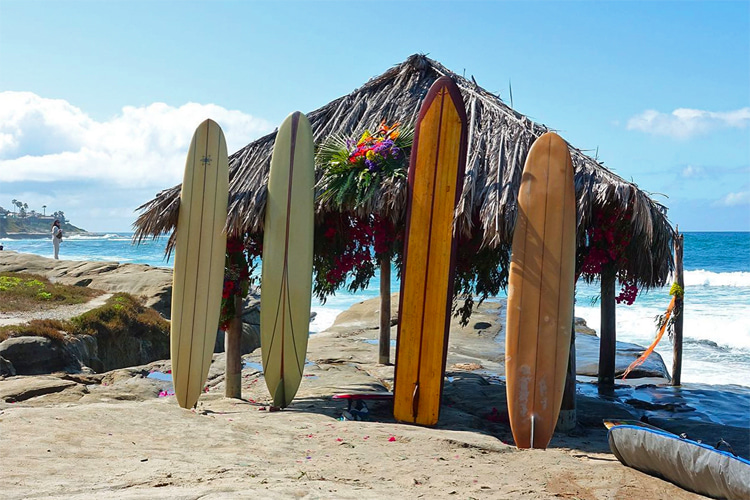
The Shack Lives
But there's more.
In 2022, the San Diego City Council honored the simple yet meaningful structure by making March 20 "The Surf Shack Windansea Beach Day."
"I think Woody Ekstrom was the last of my dad's pals who were still alive and built the original shack with him," says Barney Roach.
"I was supposed to meet with Woody, Covid hit, they asked us to hold off, and then we waited too long."
"His brother Carl Ekstrom is a renowned La Jolla surfboard builder and is around 80 years of age. Woody was 14 years old when Carl was born."
"When I was little, a few of the guys would come over to our house - Buddy Hull, Bill Isenhouer, John Blakenship, etc."
"My father mentioned Don Okey a lot, but I do not remember meeting him. I was about five through seven years old then."
The Roach family still owns their home on Marine Street in La Jolla.
"The California Surf Museum has asked us to try to find his original black and white negatives of all the Windansea and surf-related pictures he took in the process," reveals Roach.
"I have three younger sisters here in San Diego - the oldest one has our family archives."
Gunnery Point
Surf shacks are not new.
According to "Surfing in San Diego," a book by John C. Elwell, Jane Schmauss, and the California Surf Museum, the first surfer hut was built in the 1930s.
Don Okey provided the materials needed to construct a simple shack at Pacific Beach Point in 1938.
During World War II, the point was known as "Gunnery Point" because the military had placed artillery on the site in case of an enemy invasion.
Before the shack was built, surfboards and gear were stored in nearby bushes, sometimes for weeks, until the surf came up.
The small reef and cobblestone point break below offers a fantastic right-hand slide on solid winter swells, with rides sometimes stretching hundreds of yards to Tourmaline Street.
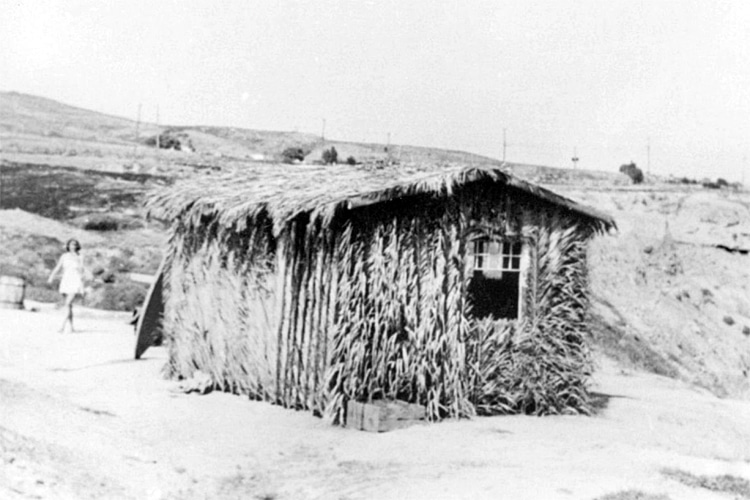
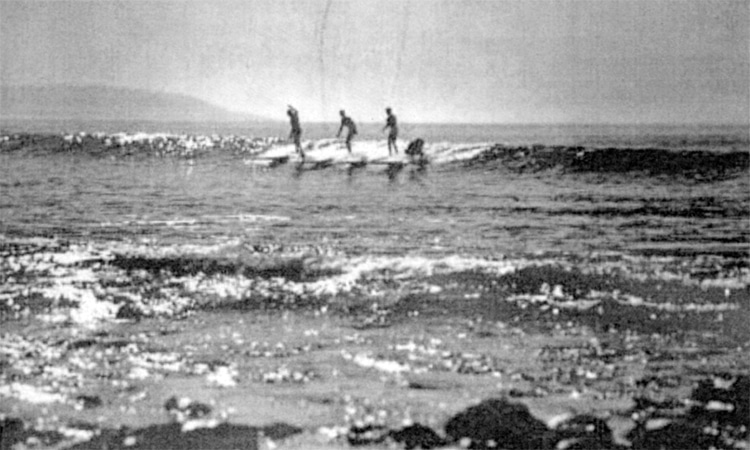
Luaus at the Windansea Surf Shack
Fashioned after much-admired Hawaiian beach culture, the annual luaus at Windansea were held between 1946 and the early 1950s.
Don Okey worked long hours to coordinate the entire event, procure the food, and supervise the cooking.
The barbeques might be above ground or in deep pits in the sand.
In this photograph, fresh timber, palm fronds, and flowers have just been delivered in preparation for the 1947 event.
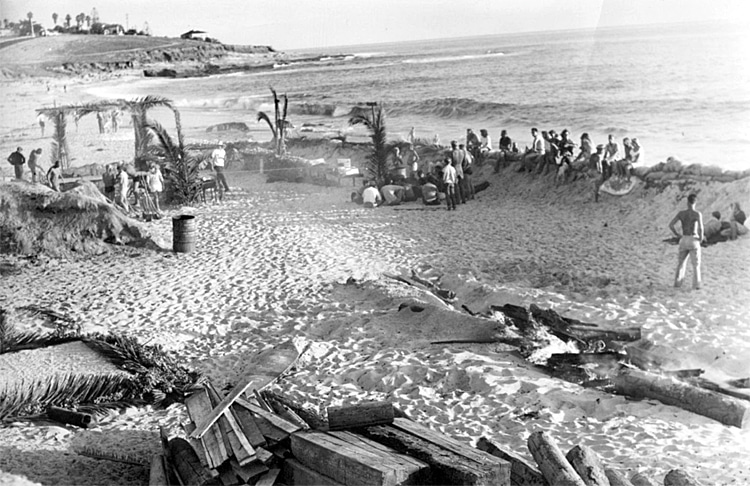
Volunteer workers would prepare the meat to roast in the pit area, and when the word was out, the luau was officially on the way.
The hugely popular Hawaiian-style luaus were only held for a few years, but surfers appeared from up and down the coast to partake in the free feast, music, and liquid refreshments.
Each luau took on a distinct island flavor.
Palm fronds and flowers covered the shack, pigs or sheep were roasted on the beach, Hawaiian attire was encouraged, and music reigned supreme.
The size of the crowds began to cause concern for the local officials, and soon they became a thing of the past.
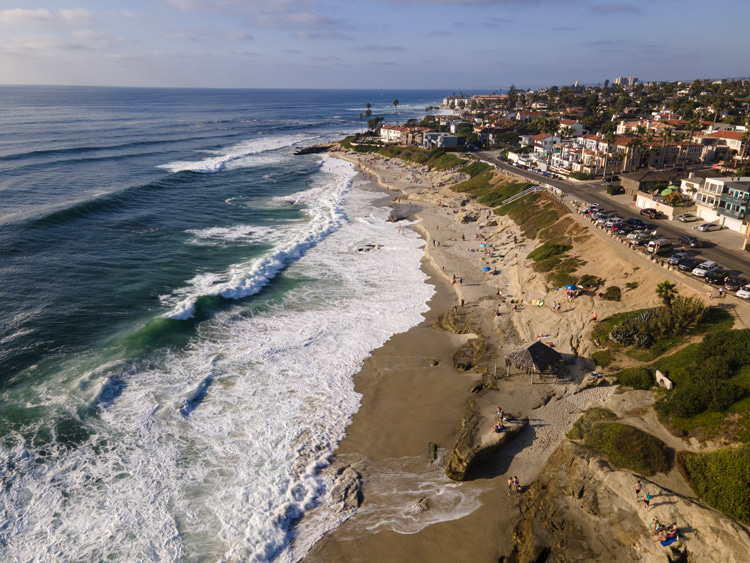
Don Okey: Surfer and Innovator
Born in La Mesa and raised in La Jolla, Don Okey designed and built the first shacks at Pacific Beach Point and Windansea and organized and ran the splendid annual luaus.
He was a strong surfer and paddler in the top 10 finishers at the Pacific Coast Championships from 1939 to 1941.
Okey and John Blankenship experimented with foam boards in the early 1950s, perfecting the chemistry and process until they had some rideable boards.
In the 1960s, Don invented a shaping machine that turned out hundreds of local boards.
To this day, the shack at Windansea stands as a testament to Don Okey's passion for the ocean and surfing.
Don eventually won the 1948 Oceanside Pier Paddleboard Race.
He had been cruising the coast looking for good surf when he heard about the event.
When he crossed the finish line, he was so far ahead of the pack that most of the nearest competitors had not even rounded the pier.
This version of the shack, seen below in 1953, was rebuilt after storm damage but lacks the changing room and board locker that the 1945 model had.
The small board leaning upright belonged to Windansea regular Tommy Hederman, an accomplished waterman and surfer who happened to be a dwarf.
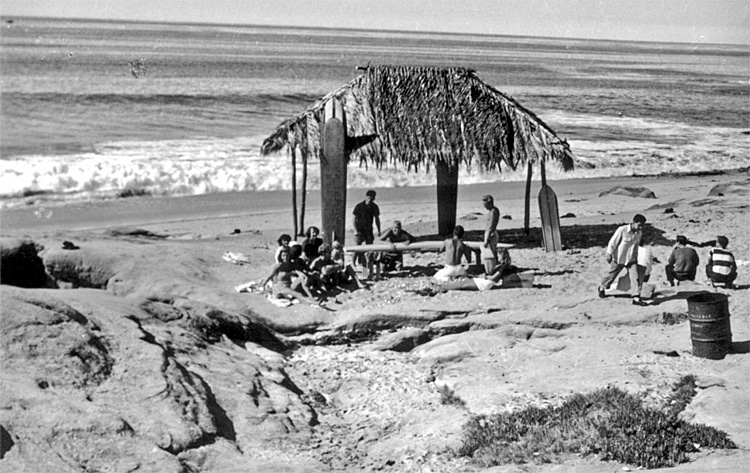
Al Nelson made his mark early on as an innovative, talented shaper.
He built balsa surfboards for the locals, and others came from up and down the coast for his boards.
Al used the Windansea Surf Shack as his base of operations, as did Pat Curren and David Cheney, until the day an errant match ignited the balsa shavings and almost burned it down.
The Hot Curl Statue
San Diego artists Mike Dormer and Lee Teacher created a nose-heavy, beer-bellied, mop-headed icon in an early-1960s cartoon strip for Scavenger magazine, and surfing's pop philosopher was born.
The Hot Curl cartoons appeared in all three issues of the short-lived Scavenger magazine, around 1958 and 1959.
Plastic models of the skinny character were available by mail order from surfing publications.
Creator Mike Dormer described his likable leading man as "pure of heart, with a sort of flawed innocence," definitely an embodiment of late-1950s anti-establishment sympathies that surfers were partial to.
Then, in 1963, Lee carried things one step further by constructing a larger-than-life statue from found materials and concrete.
He and Mike hauled the finished icon down to Windansea late one night, carved out a base in a rock, and cemented Hot Curl in place.
After much controversy and consternation, city officials deemed the statue structurally "sound," and a party was scheduled to celebrate it.
Nationwide media interest was high, and large numbers of onlookers attended the official dedication.
However, just two weeks after Hot Curl's installation ceremony, the playful icon was attacked, mutilated, and decapitated.
Legend has it that the vandalism was committed by one of Windansea's most pugilistic locals, who was apparently a member of a rival surf club.
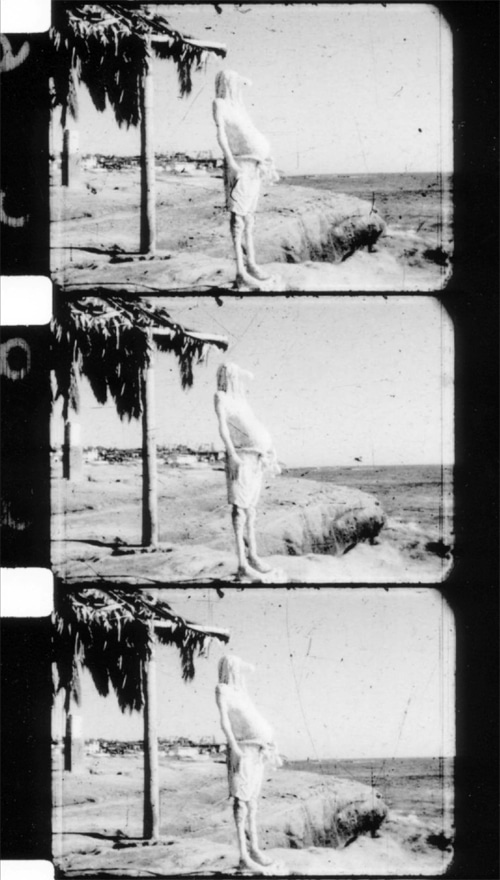
Lee Louis took the 16-mm footage featured above of Hot Curl at the statue's official debut for part of a KFSD-TV (now 10 News - ABC San Diego KGTV) on-the-spot story.
Hot Curl stands sentinel over Windansea as Anna Ekstrom Deneen, on vacation from Minnesota to visit her family, watches over her son Daniel.
A few days following this picture, a disgruntled Windansea regular reduced the Hot Curl statue to a headless pile of rubble.
